Is Bigger Edit Batch Size Always Better? -- An Empirical Study on Model Editing with Llama-3
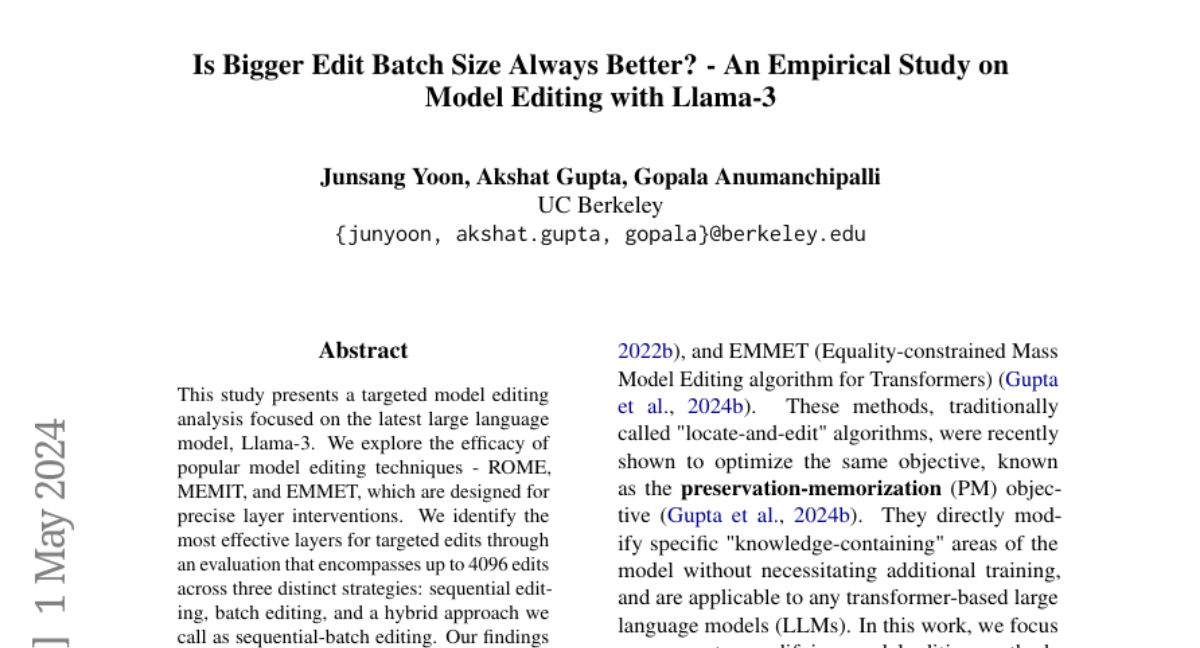
This study presents a targeted model editing analysis focused on the latest large language model, Llama-3. We explore the efficacy of popular model editing techniques - ROME, MEMIT, and EMMET, which are designed for precise layer interventions. We identify the most effective layers for targeted edits through an evaluation that encompasses up to 4096 edits across three distinct strategies: sequential editing, batch editing, and a hybrid approach we call as sequential-batch editing. Our findings indicate that increasing edit batch-sizes may degrade model performance more significantly than using smaller edit batches sequentially for equal number of edits. With this, we argue that sequential model editing is an important component for scaling model editing methods and future research should focus on methods that combine both batched and sequential editing. This observation suggests a potential limitation in current model editing methods which push towards bigger edit batch sizes, and we hope it paves way for future investigations into optimizing batch sizes and model editing performance.
A Careful Examination of Large Language Model Performance on Grade School Arithmetic
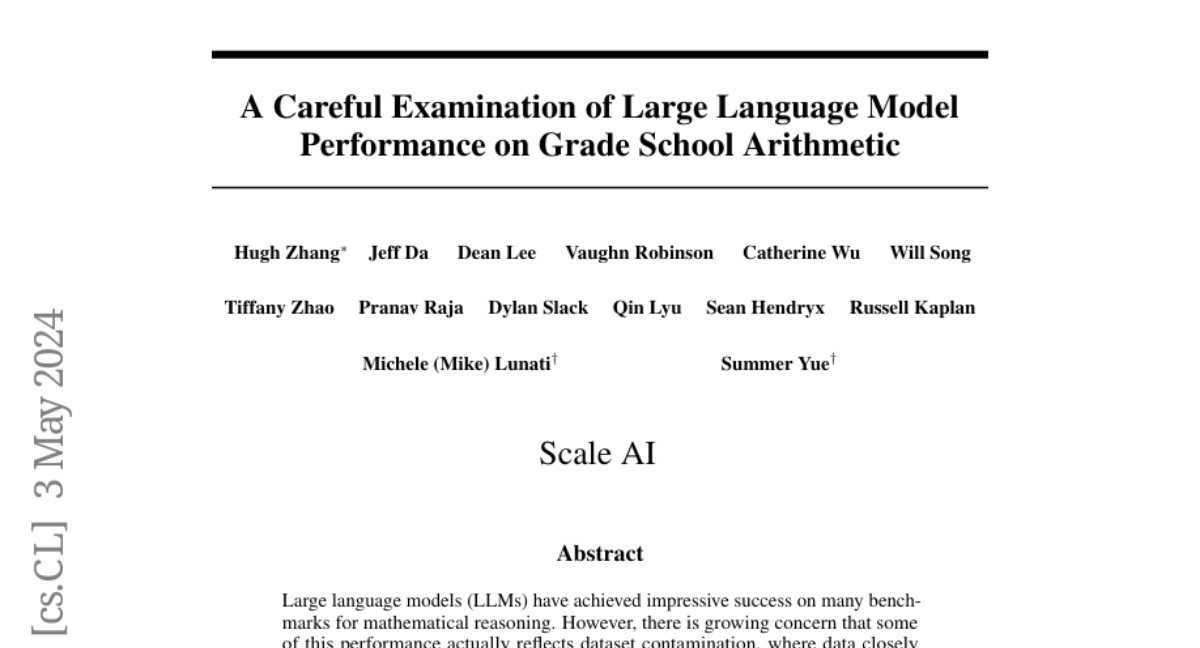
Large language models (LLMs) have achieved impressive success on many benchmarks for mathematical reasoning. However, there is growing concern that some of this performance actually reflects dataset contamination, where data closely resembling benchmark questions leaks into the training data, instead of true reasoning ability. To investigate this claim rigorously, we commission Grade School Math 1000 (GSM1k). GSM1k is designed to mirror the style and complexity of the established GSM8k benchmark, the gold standard for measuring elementary mathematical reasoning. We ensure that the two benchmarks are comparable across important metrics such as human solve rates, number of steps in solution, answer magnitude, and more. When evaluating leading open- and closed-source LLMs on GSM1k, we observe accuracy drops of up to 13%, with several families of models (e.g., Phi and Mistral) showing evidence of systematic overfitting across almost all model sizes. At the same time, many models, especially those on the frontier, (e.g., Gemini/GPT/Claude) show minimal signs of overfitting. Further analysis suggests a positive relationship (Spearman's r^2=0.32) between a model's probability of generating an example from GSM8k and its performance gap between GSM8k and GSM1k, suggesting that many models may have partially memorized GSM8k.
Spectrally Pruned Gaussian Fields with Neural Compensation
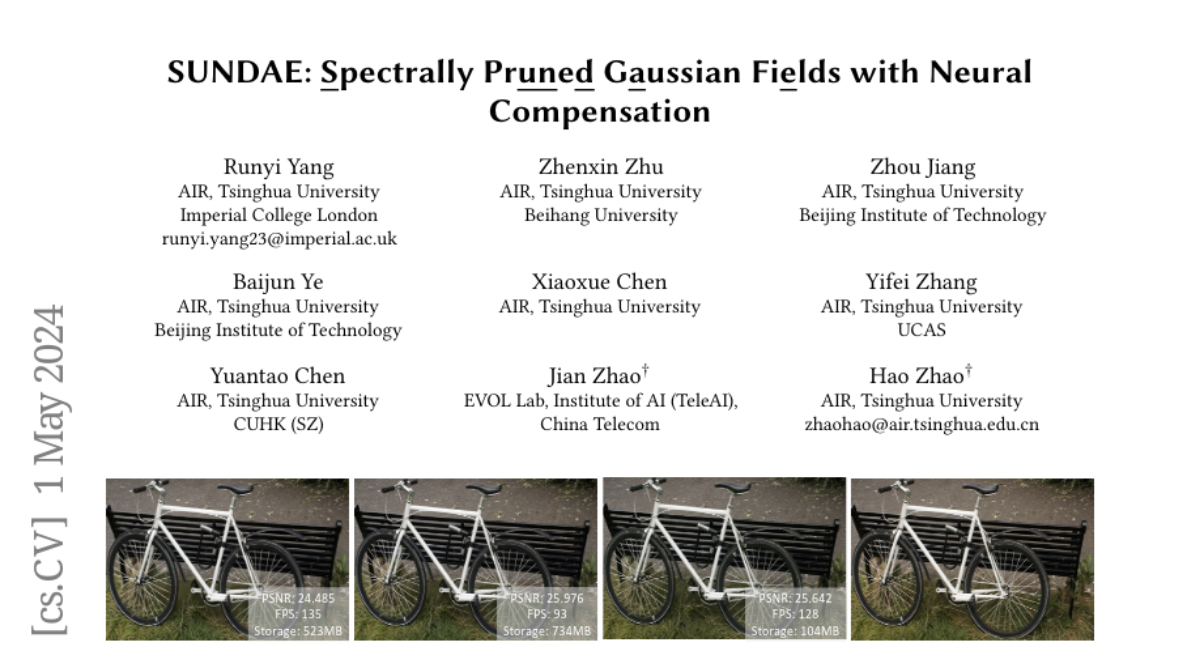
Recently, 3D Gaussian Splatting, as a novel 3D representation, has garnered attention for its fast rendering speed and high rendering quality. However, this comes with high memory consumption, e.g., a well-trained Gaussian field may utilize three million Gaussian primitives and over 700 MB of memory. We credit this high memory footprint to the lack of consideration for the relationship between primitives. In this paper, we propose a memory-efficient Gaussian field named SUNDAE with spectral pruning and neural compensation. On one hand, we construct a graph on the set of Gaussian primitives to model their relationship and design a spectral down-sampling module to prune out primitives while preserving desired signals. On the other hand, to compensate for the quality loss of pruning Gaussians, we exploit a lightweight neural network head to mix splatted features, which effectively compensates for quality losses while capturing the relationship between primitives in its weights. We demonstrate the performance of SUNDAE with extensive results. For example, SUNDAE can achieve 26.80 PSNR at 145 FPS using 104 MB memory while the vanilla Gaussian splatting algorithm achieves 25.60 PSNR at 160 FPS using 523 MB memory, on the Mip-NeRF360 dataset. Codes are publicly available at https://runyiyang.github.io/projects/SUNDAE/.
SemantiCodec: An Ultra Low Bitrate Semantic Audio Codec for General Sound
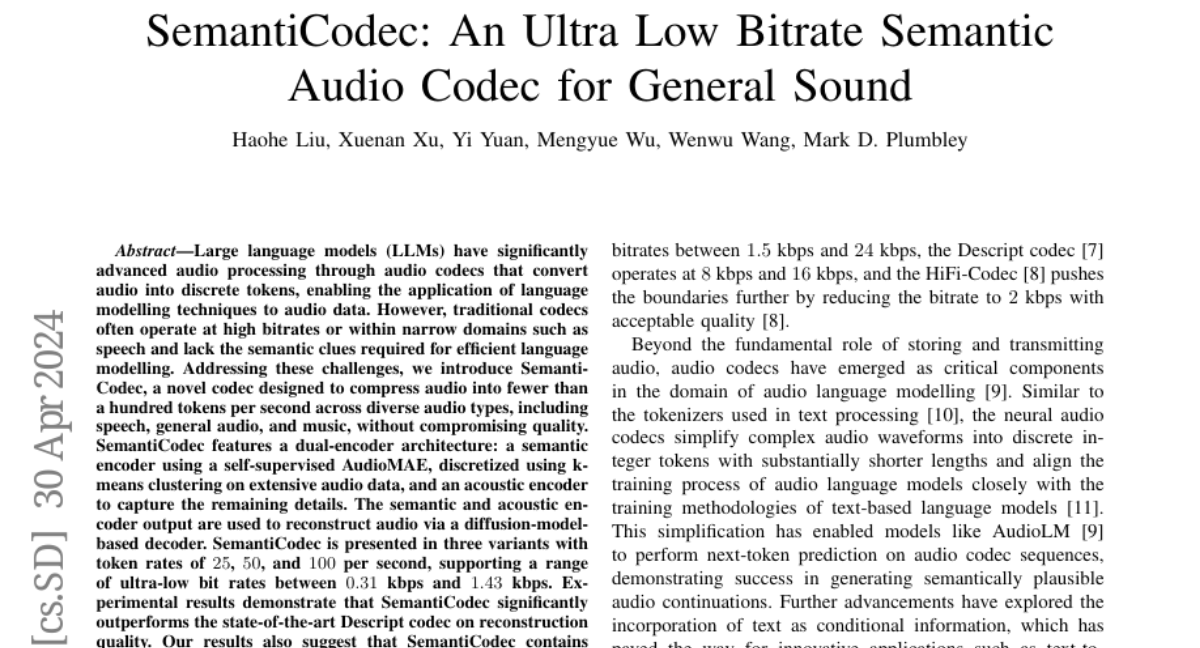
Large language models (LLMs) have significantly advanced audio processing through audio codecs that convert audio into discrete tokens, enabling the application of language modelling techniques to audio data. However, traditional codecs often operate at high bitrates or within narrow domains such as speech and lack the semantic clues required for efficient language modelling. Addressing these challenges, we introduce SemantiCodec, a novel codec designed to compress audio into fewer than a hundred tokens per second across diverse audio types, including speech, general audio, and music, without compromising quality. SemantiCodec features a dual-encoder architecture: a semantic encoder using a self-supervised AudioMAE, discretized using k-means clustering on extensive audio data, and an acoustic encoder to capture the remaining details. The semantic and acoustic encoder outputs are used to reconstruct audio via a diffusion-model-based decoder. SemantiCodec is presented in three variants with token rates of 25, 50, and 100 per second, supporting a range of ultra-low bit rates between 0.31 kbps and 1.43 kbps. Experimental results demonstrate that SemantiCodec significantly outperforms the state-of-the-art Descript codec on reconstruction quality. Our results also suggest that SemantiCodec contains significantly richer semantic information than all evaluated audio codecs, even at significantly lower bitrates. Our code and demos are available at https://haoheliu.github.io/SemantiCodec/.
Clover: Regressive Lightweight Speculative Decoding with Sequential Knowledge
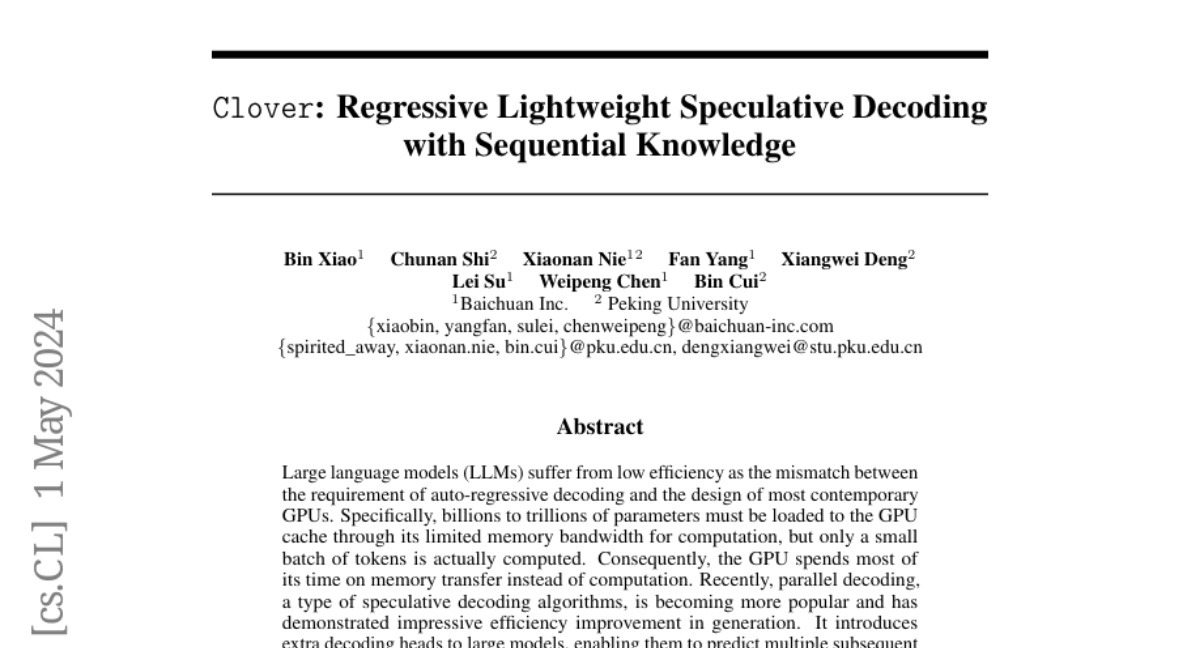
Large language models (LLMs) suffer from low efficiency as the mismatch between the requirement of auto-regressive decoding and the design of most contemporary GPUs. Specifically, billions to trillions of parameters must be loaded to the GPU cache through its limited memory bandwidth for computation, but only a small batch of tokens is actually computed. Consequently, the GPU spends most of its time on memory transfer instead of computation. Recently, parallel decoding, a type of speculative decoding algorithms, is becoming more popular and has demonstrated impressive efficiency improvement in generation. It introduces extra decoding heads to large models, enabling them to predict multiple subsequent tokens simultaneously and verify these candidate continuations in a single decoding step. However, this approach deviates from the training objective of next token prediction used during pre-training, resulting in a low hit rate for candidate tokens. In this paper, we propose a new speculative decoding algorithm, Clover, which integrates sequential knowledge into the parallel decoding process. This enhancement improves the hit rate of speculators and thus boosts the overall efficiency. Clover transmits the sequential knowledge from pre-speculated tokens via the Regressive Connection, then employs an Attention Decoder to integrate these speculated tokens. Additionally, Clover incorporates an Augmenting Block that modifies the hidden states to better align with the purpose of speculative generation rather than next token prediction. The experiment results demonstrate that Clover outperforms the baseline by up to 91% on Baichuan-Small and 146% on Baichuan-Large, respectively, and exceeds the performance of the previously top-performing method, Medusa, by up to 37% on Baichuan-Small and 57% on Baichuan-Large, respectively.